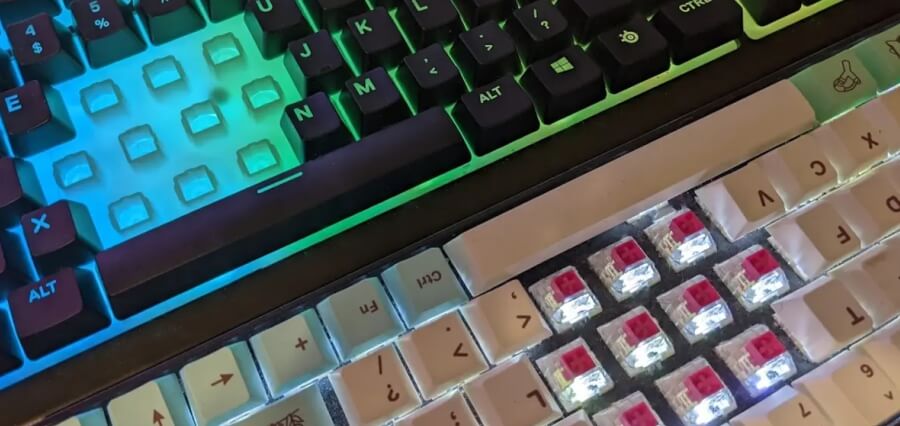The Total Overview to Membrane Switch Modern Technology and Its Applications
The Total Overview to Membrane Switch Modern Technology and Its Applications
Blog Article
The Role of Membrane Changes in Enhancing Tool Usability and Looks
Membrane layer switches represent a substantial improvement in interface technology, perfectly integrating usability with aesthetic allure. Their layout is not only functional, offering responsive controls in a portable kind, yet also adjustable, enabling one-of-a-kind branding and visual engagement. As markets progressively focus on customer experience, the effects of these functions prolong beyond mere comfort, influencing item style and customer satisfaction. What remains to be explored is how these elements will evolve in reaction to emerging trends and technological advancements, shaping the future of human-device communication.
Recognizing Membrane Layer Switch Technology

The visuals overlay acts as the noticeable surface, usually printed with icons and labels that assist user interaction. Under this layer, the spacer serves as a separator, ensuring that the conductive layer just makes call when a button is pushed. The conductive layer, generally made of a conductive ink or product, finishes the circuit and sends signals to the gadget's electronic devices.
Sturdiness is a considerable benefit of membrane layer buttons, as they are resistant to wetness, dust, and impurities, making them suitable for numerous environments. Furthermore, membrane layer switches can be personalized in terms of shape, size, and design, enabling manufacturers to tailor user interfaces to particular device requirements. This flexibility adds to their prevalent use across industries, from consumer electronics to medical gadgets.
Use Advantages of Membrane Layer Buttons
The use benefits of membrane switches are evident in their user-friendly style and easy to use functions. These buttons assist in simple communication by including responsive comments and identifiable signs, which improve the individual experience with clear communication of function (Membrane Switch). The flat profile of membrane layer switches over permits very easy assimilation right into different gadgets, reducing the learning curve for customers unfamiliar with complex controls
Additionally, membrane layer buttons are usually made with level of sensitivity in mind, allowing individuals to engage with controls easily. This particular is particularly useful in environments where quick feedbacks are essential, such as clinical devices and commercial equipment. Their resistance to wetness and contaminants better ensures trustworthy operation, advertising individual confidence in varied settings.
Moreover, membrane layer switches can be tailored to fit particular applications, suiting special user demands and preferences. This flexibility promotes a sense of possession among customers, as they can communicate with controls that really feel tailored to their needs.
Aesthetic Enhancements Via Design
Visual enhancements play a substantial function in the overall charm and functionality of gadgets equipped with membrane layer switches. These buttons offer flexible design opportunities that can be tailored to satisfy brand name identity and individual preferences. The capability to include lively colors, personalized graphics, and differed textures permits manufacturers to produce aesthetically striking user interfaces that resonate with customers on an emotional degree.
The flexibility of membrane button style also facilitates the combination of special shapes and formats, adding to a structured look that enhances the individual experience. This not only makes gadgets a lot more eye-catching but likewise help in instinctive navigating, as users can easily determine practical locations and controls. Furthermore, progressed printing technologies allow the recreation of detailed designs and high-resolution photos, further elevating the aesthetic quality.
Furthermore, using backlighting in membrane layer buttons can considerably improve presence and charm, especially in low-light atmospheres. This combination of appearances and capability fosters an engaging customer experience, making tools not just extra enjoyable to make use of yet additionally extra straightened with modern style patterns. Ultimately, aesthetic improvements via mindful membrane layer button style can transform regular devices right into engaging, easy to use products.
Applications in Various Industries
In numerous sectors, membrane layer switches have become essential elements that enhance functionality and use throughout a large variety of devices. These cutting-edge buttons discover applications in sectors such as healthcare, customer electronic devices, automobile, and additional hints industrial devices.
In the health care market, membrane layer switches are commonly made use of in clinical devices, such as analysis devices and patient surveillance systems, where they supply user-friendly interfaces that boost customer interaction while keeping hygiene. Similarly, in customer electronics, membrane layer switches assist in user-friendly controls in devices, remote controls, and pc gaming gadgets, supplying seamless procedure and aesthetic charm.

Future Trends in Membrane Switches
Emerging trends in membrane layer buttons are established to reinvent individual interfaces across various applications, driven by developments in technology and increasing customer needs for performance and style. One noteworthy trend is the unification of capacitive touch modern technology, which uses a much more responsive and modern-day customer experience compared to traditional mechanical buttons (Membrane Switch). This change not only boosts use however also permits sleeker gadget appearances
Furthermore, the integration of personalized graphics and backlighting is ending up being increasingly preferred. Makers are leveraging innovative printing methods and LED technology to develop visually interesting interfaces that provide to certain user requires while improving tool visibility in numerous illumination problems. This personalization cultivates a stronger psychological connection in between users and their tools.

Verdict
To conclude, membrane layer switches considerably boost both use and aesthetic appeals in modern-day tools. Their intuitive layout, receptive controls, and personalized graphics facilitate user interaction, particularly in vibrant settings. Additionally, the consolidation of vivid shades and backlighting not only elevates visual charm however likewise boosts capability, permitting for effective navigation in various lighting conditions. As sectors proceed important source to advance, the convenience and cutting-edge potential of membrane layer switches will likely play an increasingly vital function in device design and user experience.
Report this page